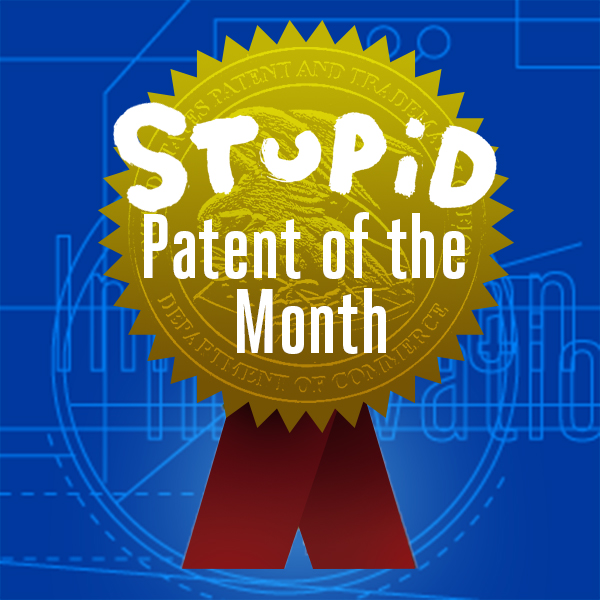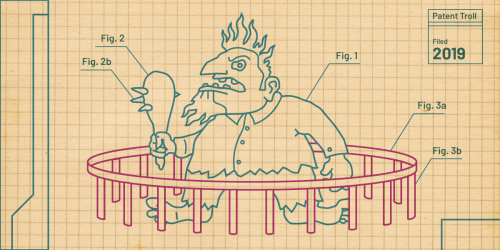
GPS technology has been around for a while. Wikipedia puts the start of development at 1973. But it wasn’t until the 1990s that it became available for consumer use. And even then, it took some time before the government removed restrictions on accuracy that it had on its use by civilians. (The government had added an intentional error to the signal that made GPS variably inaccurate up to 50 meters.)
With the loosening of restrictions on GPS came furious development in consumer applications—and a flurry of patents.
Which brings us to this month’s Stupid Patent of the Month. The dubious honor goes to U.S. Patent No. 6,442,485, “Method and apparatus for an automatic vehicle location, collision notification, and synthetic voice,” filed in 1999. The “Background of the Invention” talks about a need for an automatic voice systems that could speak for a driver involved in a collision and transmit location details to 911. For example, the patent says that “[i]t would be desirable to have an automatic vehicle location and collision notification system that would ascertain if a vehicular collision had occurred and communicate directly with an emergency facility.”
But after this background, the patent devolves into a wilderness of made-up words and technobabble. The patent includes fabricated phrases such as “Location Comparator-Indicator Module” and “Automatic Speed Controlled Location Detection Module.” (Google searches of these phrases turns up nothing other than results related to the patent.) Reading the patent to try to figure out what it means becomes an exercise in cross-referencing and guesswork. Even worse, key terms in the claims (this is the part of the patent that is supposed to clearly explain what that patent covers) don’t even appear in the description of the purported invention. This means that it is very difficult, if not impossible, to understand what the claims mean and to guess how a court might interpret them.
This sort of made-up gobbledygook is likely what has allowed NovelPoint Tracking LLP, the owner of this month’s Stupid Patent, to sue over 90 companies for infringement. The latest round of lawsuits, filed on March 27, 2015, includes companies such as Subway (the sandwich artists, not a company related to transportation), McDonald’s, and Burger King.
And what do these fast food franchises have to do with vehicle location, collisions, and synthetic voices? With respect to Subway, NovelPoint claims that Subway’s Windows phone mobile application infringes NovelPoint’s patent.
Here’s the description of Subway’s app from Microsoft’s website:
Don't know where to find a local Subway? We're here to help. This app will display a list of local Subway locations along with the ability to get directions and let your friends know where to meet you.
We don’t know what, exactly, NovelPoint thinks it owns, but it looks like it is accusing Subway of infringing because it has an app that shows a map with directions. And given the incomprehensibility of its patent, it can get away with this, at least enough to secure a quick settlement and get out before a court rules that no, in fact, it doesn’t own a map with directions.
And indeed that is what appears to have happened. Of the almost 100 cases NovelPoint has filed, exactly none of the cases has had a decision on the merits of NovelPoint’s claims. From what we can see, all of the cases have settled very quickly, most likely for small nuisance sums.
Patent owners shouldn't be able to get away with this. Patents should be clear and understandable. If new words are used, they should be defined. And if words already exist in the relevant art, they should be used. NovelPoint’s patent is a great example of how using fake terms can be used to obfuscate what the patent actually claims, and then used to claim infringement by something no one would have considered the patent owner to have invented. We have laws that should prevent this sort of gaming. The Patent Office and courts need to start actually enforcing them.





